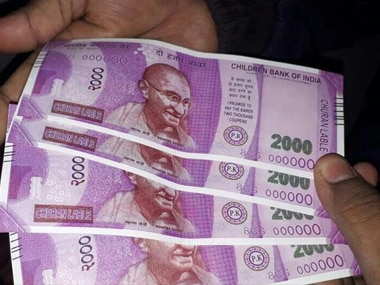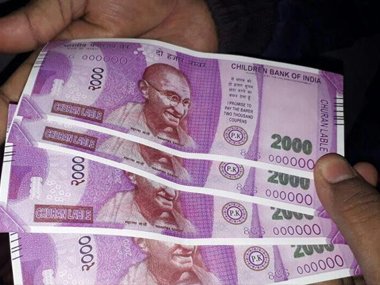It has been a little over two years to the Insolvency and Bankruptcy Code, 2016 (IBC). And since its inception, the IBC has garnered sufficient attention from media, and stakeholders alike. The framers touted the IBC to be the panacea of all woes, the killer of non-performing assets (NPAs) and the redeemer of unpaid creditors. More than two years post-IBC, while it may still be too early to say whether the IBC has lived up to the expectations of the legislature, it is safe to say that it has successfully transformed the process of resolution of commercial insolvency in India. Before the inception of the IBC, the laws governing commercial and individual insolvency were fragmented, to say the least. For example, the provisions relating to the insolvency of corporations were scattered amongst laws as diverse as the Companies Act, 1956, the Recovery of Debts due to Banks and Financial Institutions Act, 1993, the Securitization and Reconstruction of Financial Assets and Enforcement of Security Interest Act, 2002 and the Sick Industrial Companies (Special Provisions) Act, 1985. Governing individual bankruptcy were, the Provincial Insolvency Act, 1920 and the Presidency Towns Insolvency Act, 1909. What led to the inception of the IBC was a legal framework for insolvency and bankruptcy which was completely inadequate, ineffective, and plagued with delays. The multiple statutes that dotted the legal regime, pre-IBC contained inherently overlapping provisions which inevitably lead to contradictions in some circumstances. The issues arising out of multiplicity of proceedings also made the law less suited for stakeholders. To further aggravate the situation, the entire process of recovery, debt restructuring and liquidation remained extremely susceptible to dilatory tactics to the extent that on an average, debt restructuring and liquidation took years. More often than not, companies under insolvency took undue advantage of beneficial legislations such as provisions prohibiting claims against sick companies under SICA, thereby avoiding liquidation proceedings / recovery of debt. [caption id=“attachment_4224983” align=“alignleft” width=“380”]  Representational image. PTI.[/caption] In this background, there was a need to consolidate and amend the laws concerning insolvency and bankruptcy of corporate persons, partnership firms and individuals in a time-bound manner. For this purpose, the Banking Law Reforms Committee was constituted in October, 2014 under the chairmanship of T K Viswanathan. In November 2015, the BLRC came out with its report recommending drastic changes to the law relating to insolvency and bankruptcy (BLRC Report). The BLRC Report took note of the statutory framework present in developed countries and recommended a complete institutional overhaul in the then present legal regime. It proposed that India shift from a “debtor-in-possession” to a “creditor-in-control” model. In line with the recommendations of the BLRC Report, and pursuant to subsequent debates and discussions, the IBC was brought into effect, rather expeditiously. Relevant provisions were notified from time to time to ensure a smooth transition. The jurisdiction has been conferred upon the National Company Law Tribunals (NCLT), which then had twelve benches across the country. The Insolvency and Bankruptcy Board of India (IBBI) was established, and it is fully functional at present; the Informational Utilities have also become functional. The IBC has also placed insolvency resolution among the highly sought-after professions. The Reserve Bank of India (RBI) set the ball rolling with the first list of 12 NPAs, which were referred to NCLT under the IBC. Between then and now, the law has evolved by leaps and bounds. What is commendable is that the close watch which the legislature has maintained on the functioning of the IBC. Within a short span of two years, the IBC has been amended multiple times to smoothen the roadblocks faced in its smooth implementation. Whether it is the much-talked about amendment to Section 29A or the inclusion of home-buyers under the ambit of financial creditors, the legislature has introduced significant amendments in a very short span. The legislature has also been prompt in issuing guidelines, circulars and clarifications to weed out ambiguity in the law, if any. The NCLTS, the NCLAT, along with various high courts and the Supreme Court of India have delivered timely judgments, thereby laying down the jurisprudence and filling in the gaps wherever necessary. The courts have laboured to honour the strict timelines of the IBC, and have been stringent with extensions. There are notable landmark judgments which have brought a lot of clarity to the provisions of the IBC. Speaking strictly in figures, so far 1,322 cases have been admitted by NCLT. Of this, 4,452 cases have been disposed at pre-admission stage and 66 have been resolved after adjudication. 260 cases have been ordered for liquidation. In 66 resolution cases, realisation by creditors was around Rs 80,000 crores. As per NCLT database, in 4,452 cases disposed at pre-admission stage, the amount apparently settled was around Rs 2.02 lakh crore.
Some of the 12 big cases such as Bhushan Power and Steel, and Essar Steel India are in advanced stages of resolution and are likely to be resolved this financial year in which realisation is expected to be around Rs 70,000 crore. Increase in conversion of NPAs into standard accounts and decline in new accounts falling in the NPA category show a definite improvement in the lending and borrowing behaviour.
With that said, the picture is not as rosy as it appears to be. The IBC has increased the load at the NCLTs manifold. While new benches have been established at different cities, there is a lot that needs to be done in this regard. The NCLTs are over-burdened and over-crowded to say the least. Separately, the IBC has drawn significant criticism for being a law more for the bankers, and less for the smaller operational creditors. MSMEs, too, are not very pleased with the treatment they have been meted out under the IBC. The power sector is also fighting for its life before the Supreme Court, seeking some respite from IBC and its strict timelines. The dust has started to settle on the big cases which are nearing resolution, and issues of everyday significance have gained centrestage. Will operational creditors be able to get their voice heard? Will the Supreme Court bend the law in favour of a specific industrial sector? What new amendments will come in to ease the functioning of IBC? These are questions will be answered in time. After all, transformations don’t happen overnight. (Tyagi is Executive Partner and Daryani, Associate at Lakshmikumaran & Sridharan Attorneys)


)

)
)
)
)
)
)
)
)



